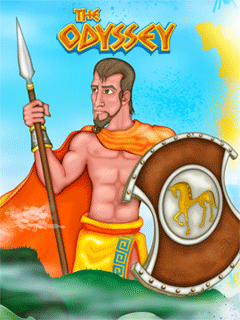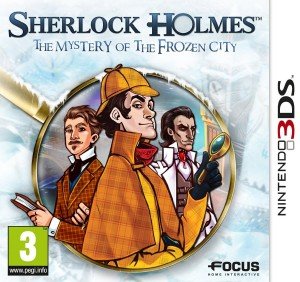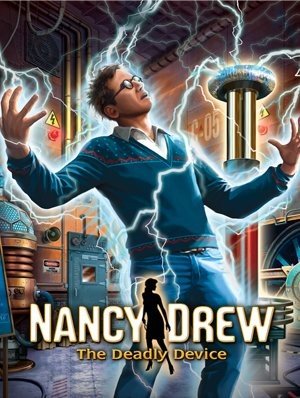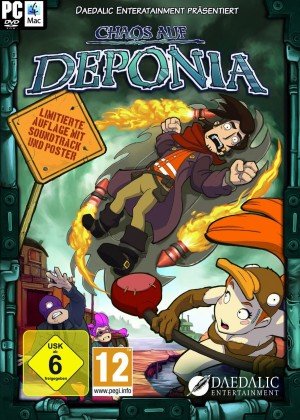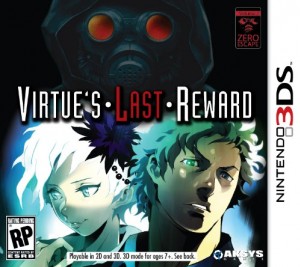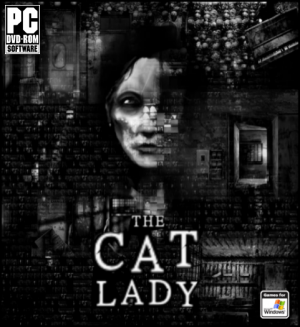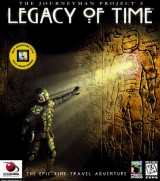Review for Miasmata
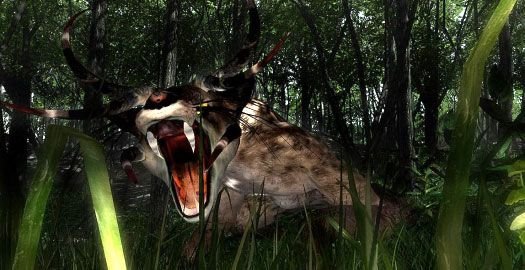
You are Robert Hughes, washed up on the shore of a tropical island, your body wracked with fever and discoloration from a deadly plague. You climb to your feet and wander to a nearby path, surrounded on one side by thick jungle foliage and endless ocean on the other. Down the path you come to a rickety log cabin—there’s blood on the floor. On the other side of the cabin, a dead body lies in a pool of blood with a knife in its back.
Hm.
Being the pragmatic type, you crouch down and pull the knife out. Clearly you’re going to need some protection. You move on. Further down the path you come across a hut full of laboratory equipment and notes on how to research local plant life and synthesize it into medicine—even a cure for the very plague that’s killing you.
Hmm.
You continue, not sure of where to go, sticking to the coast to avoid getting lost, mapping as you go. You stop for water, pick through the forest in search of medicinal plants, and search for more huts, which in turn might have more information about just what happened on the island, why everyone is dead, and how you can cure yourself. You step through the grass, turn inland to head down a path toward the jungle interior—and see a massive horned beast staring you down through the grass. You jump from fright, freeze in place, recover your breath. The beast swipes, your vision goes black. You’re dead.
Welcome to Miasmata.
Developed by brothers Joe and Bob Johnson, Miasmata is a first-person survival horror-adventure with an emphasis on survival. Perhaps the easiest way to describe it is to compare its individual parts, though this only gives a glimpse of the way these parts work together to create something utterly unique. Take the quiet, surreal worlds of Myst with a far more scientifically-minded version of the alchemy systems of The Elder Scrolls series and the unpredictable stalking terror of Amnesia and free cult favorite Slender, with a dash of its own hardcore survivalist mechanics thrown in. At first glance it’s a strange concoction, but it works exceedingly well.
Miasmata is a brutal game, made by people seemingly unafraid to take their design ideas to the logical extreme. Plenty of games have elements of survival and exploration, but which is the last one you can think of that will unblinkingly leave you lost in the dark in the middle of the jungle with no way to triangulate your position as you die slowly of dehydration?
The island apparently served as some sort of natural laboratory for a group of exiled scientists searching for a cure for the plague. That’s as much as you’re told in the introduction, and from there the story is relayed through snippets of journal entries, newspaper clippings, and scientific writings scattered around the small huts and tents used by the scientists all over the island. Like that archetypal game of exploration, Myst, you are given little to no guidance as you poke around. Very early on you conveniently discover a formula for synthesizing the cure, but finding the recipes for the individual agents that make up the cure is no easy task, and it’s also up to you to map out the island and piece together the mysterious events that left the island a tomb instead of a laboratory.
Unlike Myst, this island does not hide a bevy of logic puzzles. In fact, Miasmata has no explicit "puzzles" at all. The core gameplay involves exploring the island and gathering plant life while keeping an eye out for huts, tents, and outposts left by the scientists, which often contain beds and lanterns (save points), examination tables (for deducing the medicinal benefits of the plants you’ve picked), synthesis tables (for turning plants or combinations of plants into medicine), and notes left behind by the scientists containing bits of exposition, clues for the whereabouts of certain plants, recipes for specific types of medicines, and most importantly, snippets of the map.
Ah, yes, the map. If you’re coming from... well, just about any open-world game ever, you'd be forgiven for assuming that Miasmata would feature a world map that helps you navigate by representing your location as a small dot or arrow. But the Johnson Brothers provide no such solace. I hope you paid attention at Boy Scout or Girl Guide camp, because the name of the game here is "triangulation". Pull up your map in-game and your character will literally hold out a map—while the game world continues in real-time around him. The same goes for the player journal and inventory—the action does not pause as Robert pulls out an actual journal and flips through the pages without ever abandoning the first-person perspective. Need a drink? Pull out the journal and look down at the strap that hangs from the binding, holding your canteen secure.
The map will show what parts of the island you’ve mapped out thus far. But it’s just that: a map. It won’t tell you where you are unless you use the game’s innovative landmark system. Triangulating your position is a matter of using the relative locations of two known landmarks in the environment to find your exact location. Doing so involves pulling up your map and then peering out over it looking for man-made reference points such as huts, stone walls, or the bizarre Easter Island-esque ancient statues that dot the landscape. Your crosshair will change when hovered over a known landmark and clicking it will draw a line on your map based on the location of the spot and its compass heading relative to you. Do this twice and you’ll be able to find your location where the two drawn lines intersect. The catch is that this only works when you can actually see at least two landmarks, and there are many places on the island that are so thick with vegetation or rocky cliffs that doing so is impossible. And landmarks have to be plotted from two separate locations before their absolute position is determined.
Whew. Sounds complicated, but trust me, it makes sense. It’s explained in great detail (with pictures!) early on and eventually it becomes second nature, even for those of us who got hopelessly lost trying to earn our navigation merit badges as kids. If this system sounds frustrating, it can be, but it also immerses you to a nearly unprecedented degree, forcing you to pay attention to minute details and slowly work your way across uncharted territory instead of sprinting around like you own the place. This deliberate pacing is what makes the game special—it feels more like a jungle island simulator than a game at times. You don’t run around between scripted events or set pieces; you slowly, carefully, painstakingly explore.
There are a few other reasons you’re going to want to take it slow in Miasmata. Remember, you’re dying of the plague, and that means you’re fighting off dehydration, anemia, and fever. Robert will become thirsty at different rates based on the passage of the time, the progress of the fever, and his physical exertion, so keeping a full canteen is essential for any extended outing. You can refill it at tents or ponds of fresh water, but those aren’t always easily accessible. Your character has been weakened by the plague as well, which means you can’t swim, climb, or run particularly well. Unlike most games where the player can stop on a dime, here your avatar has momentum. If you’re barreling along, sprinting through a jungle and you come to a slope, you may just sail right over and tumble ass-over-teakettle all the way down. This has got to be the only game where the player can literally trip. Annoying? Sure, but it adds greatly to the sense of tension and desperation that pervades the game.
Which brings us to the fever. This particular effect of the plague worsens much like thirst, with symptoms getting increasingly disruptive if left untreated. Physical harm also leads to a higher fever. Once a fever hits, the screen will start occasionally blurring and Robert will stop in his tracks, trying to regain his composure. This gets worse and worse until you can barely move, and then finally you fall to the ground, coughing, and the screen fades to black.
To avoid that nasty fate, you’ll need medicine, which comes from synthesizing various plants around the island. To find out which ones create medicine, you’ll have to pick them (in a nice touch, your character actually holds the picked flora in his left hand) and take them to an examination table, where research can be done and recorded in your journal. Basic medicine has only one ingredient, but stronger medicine can be made by combining plants. Other combinations can create drugs that temporarily or permanently boost abilities such as endurance or mental clarity. Of course the major goal of the game is to synthesize the full cure using the same process, but basic medicine is the most oft-needed and oft-synthesized in the game.
The fever doesn’t just lead to dizzy spells, though. It also attracts the creature. Yes, the island is home to an animal, one that stalks relentlessly, attacking nearly at random. Increased levels of fever seem to attract it, but there is no real way to predict when it will choose to strike. This means that you will nearly always be on edge while you play. The randomness of the attacks means you cannot outguess the designers on this one—like the experimental Slender, your assailant can come from anywhere at any time without warning. You turn around and there it is, barreling at you, or more often, just watching from the grass. The game gives you weapons, but they are of almost no use, since you cannot kill the creature, only deter it momentarily. Fire, in the form of torches you can carry, also wards off the creature's advances, but again, this isn’t particularly effective. Your best bet to avoid death (and thus restarting from your last save) is to run or hide.
The creature is actually more terrifying when you can’t see it. Once it makes its appearance the fear level drops due to uneven AI and a somewhat goofy-looking creature model. Its appearance is no secret—a fully exposed picture of the beast is featured in official game art. It resembles a kind of horned cat/bear hybrid, and while it certainly doesn’t look friendly, it’s far from the nightmare-fuel of Amnesia’s abominations. And though it’s undoubtedly heart-pounding when the creature is sniffing around two feet away while you huddle in the grass (hiding in tall vegetation is an effective tactic), it’s decidedly less terrifying watching the creature get stuck on a crag of rock and wander around in circles while you stand ten feet away. The pathfinding is hit-and-miss; it can be brutally single-minded, gliding over the unforgiving landscape towards you, or it can get caught up in the strangest places and all but cease to work. This kind of glitching isn’t terribly common, but I saw it a few times in my 11-hour playthrough. In general though, the creature’s mere presence in the game raises the tension throughout. I hesitate to call Miasmata a horror game, but it does maintain a level of genuine tension from start to finish. The time I was lost in the swamp with only my trusty lighter illuminating the murky water and I walked right into him... oh man, I jumped high out of my chair, screamed like a child and almost knocked over my cup, and it was fantastic.
Strangely, Miasmata can also be very soothing to play. Often this is a false sense of security as the creature may very well be nearby, but there are moments when you will allow yourself to feel relatively safe. Labs and huts are safe areas, and when you are fully hydrated and rested, in familiar territory near a hut you can easily sprint to, an already meditative game becomes downright relaxing. The lush island vegetation with sunlight streaming through the trees, the singing of birds and lapping of waves, brief snippets of ambient music; they all work in conjunction to lull you into a peaceful trance-like pace of exploration. And then the beast gets you.
In the early going, you’ll find hand-drawn maps of trails from your current location to the next outpost worth exploring. While the game never actually pens you in, the vast majority of players will take the hint and follow the trail, which lends the first few hours a pretty linear feel. Make your way to the next outpost, find the next scrap of map, and repeat. But before long you run out of maps. When I reached this point I was confused, absolutely certain that I had missed a map somewhere along the way, but eventually I realized that the game was finished leading me by the nose. I’m certain that many other players will run into the same confusion—there’s no overt hint that the style of play has changed significantly. The game actually improves once you’re cut loose, but it’s worth mentioning here so that you don’t do what I did and waste an hour combing over the same patch of land for a map that doesn’t exist.
Once the game opens up, the different elements of the plague cure can be constructed in any order. It’s not as though there’s no direction whatsoever, but the method you use for exploring the island is entirely up to you. Will you systematically work out a grid system and tackle the island square by square? Will you wander aimlessly until you find a trail to follow and hope it takes you to an outpost containing a map? Or will you stick to the coasts, mapping out the perimeter of the island before making your way into the unknown interior? All are viable approaches. Since there is no scripted plot to advance and no invisible walls or gameplay gates to keep you bounded into particular areas, you really can go wherever you please. Eventually you’re going to have to cover a good portion of the island, but how you go about it is up to you.
The size and scope of the game is remarkable for a two-man team, but the lack of resources available to bigger teams with larger budget is evident from the start. The graphics are inconsistent—the lighting is gorgeous and the foliage is far more dense and varied than in many jungle games, but textures are blurry and hide their tiling poorly, character models are minimalistic and strangely proportioned, and what few animations there are (mostly the creature and your hands) would look more at home in 1998 than 2012. None of this detracts much from the game, however—I found myself more immersed in Miasmata’s island than in any number of similar wilderness settings in games with multi-million dollar budgets, due in large part to small details: bugs crawling across the forest floor, rain drizzling through the jungle canopy, and birds fleeing from the trees as the beast bounds past, among others.
The soundtrack is sparse, consisting of soothing and ethereal ambient music that plays only over the title screen and in the vicinity of major outposts of the game. What’s there adds much to the atmosphere, but there isn’t much. The sound effects on the other hand are almost constant—the crunching of twigs underfoot, the rustling of leaves in the wind, the sloshing of the tide against an outcropping of rock. The island creates its own soundtrack that more than does the job.
For all the little details it gets right, the game does demonstrate a general lack of polish. Immediately upon launch I ran into a number of technical issues, mostly graphical. Flickering menus and textures, sudden loss of mouse control, and generally awful performance plagued my experience (pun intended). There was nothing game-breaking, but unfortunate annoyances were disappointingly common. My computer is far from top-of-the-line, but it’s hardly a slouch, yet despite pulling a solid 40 frames per second in another new jungle island release, Far Cry 3, I was lucky to hit 15 FPS in Miasmata, even on lower settings.
While the frame rate never improved, a quick trip to Google revealed that most of these issues are fixable, and to the developers’ credit, they have been very responsive to public complaints, working directly with their customers to solve issues and taking those experiences into account for a series of planned patches, including one specifically designed to improve performance. As of this writing, most of the issues remain unpatched, but there is every reason to believe that the Brothers Johnson intend to support their game for quite some time.
Miasmata is not an adventure game in the traditional sense. Indeed, there’s almost nothing traditional about it. It tries many new things, succeeding wildly at a few of them. It’s certainly not for everybody—if the idea of playing jungle botanist doesn’t sound at least a little intriguing, you’re going to want to look elsewhere. But for those of you with a well of patience, a strong stomach, and a green thumb, Miasmata is a rejuvenating, fresh slice of gaming. It’s immersive, mysterious, harsh, serene, terrifying, beautiful, and hideous all in one go.
WHERE CAN I DOWNLOAD Miasmata
Miasmata is available at:
We get a small commission from any game you buy through these links (except Steam).Our Verdict:
An uncompromisingly methodical and detailed survival adventure, Miasmata is a tense, slow-burning gem.













